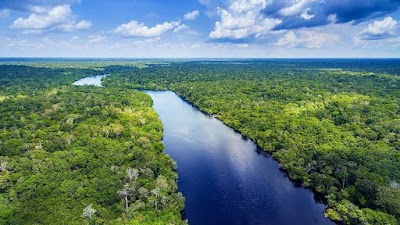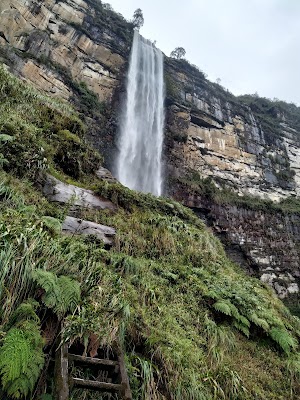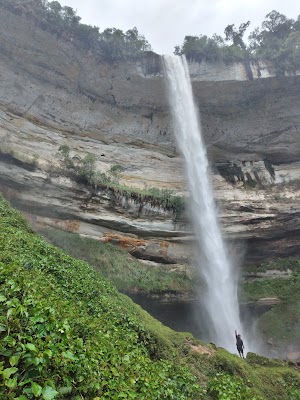Kuélap Fortress (Fortaleza de Kuélap)
Related Places
Overview
High in the cloud forests of northern Peru's Amazonas region lies the **Fortaleza de Kuelap**, or the **Kuélap Fortress**, a stunning testament to the ingenuity and resilience of the Chachapoya people. Constructed between 900 and 1100 AD, this ancient fortress sits majestically at 3,000 meters above sea level on the Andes Mountains' slopes, offering breathtaking views of the Utcubamba Valley that stretches below.
The fortress is built from massive limestone blocks, with outer walls that rise nearly 20 meters in certain areas, forming a formidable barrier that once protected over four hectares of land. Inside these protective walls, archaeologists have uncovered more than 400 circular stone structures, likely serving various purposes such as living quarters, storerooms, and ceremonial sites. These structures showcase the distinctive architectural style of the Chachapoya, adorned with intricate friezes and carvings that reflect their artistic flair.
Creating Kuélap was no small feat. The Chachapoya people strategically selected this location, capitalizing on the natural defensive advantages of the steep terrain. Access to the fortress was limited to three narrow, carefully placed entrances, making it challenging for invaders to penetrate its defenses. The main entrance, a narrow, funnel-like passage, forced attackers to advance single file, effectively neutralizing the advantage of larger numbers.
Beyond its military significance, Kuélap thrived as an urban center. Archaeological findings indicate that at its peak, the fortress may have housed up to 3,000 inhabitants. Within its walls, the Chachapoya developed a sophisticated society characterized by advanced agricultural terraces, intricate irrigation channels, and extensive storage facilities for surplus crops. Staple crops such as corn, quinoa, and potatoes were cultivated in the region, providing sustenance even during periods of conflict or drought.
Kuélap's strategic location also made it a vital hub for trade. The Chachapoya engaged in commerce with neighboring cultures, exchanging goods like pottery, textiles, and foodstuffs. Its position along ancient trade routes allowed Kuélap to flourish economically, further solidifying its importance in the area.
Despite its formidable defenses, Kuélap eventually faced decline. The rise of the Inca Empire in the 15th century posed new challenges for the Chachapoya. Historical records reveal that the Incas ultimately conquered the fortress, although the Chachapoya fiercely resisted their advance. Following the Spanish conquest of the Inca Empire in the 16th century, Kuélap was largely abandoned, left to the ravages of time and nature.
Rediscovered in the 19th century by European explorers, Kuélap has since captivated historians, archaeologists, and travelers alike. Extensive restoration and conservation efforts commenced in the late 20th century, ensuring this remarkable site would be preserved for future generations. Today, Kuélap stands as a testament to the Chachapoya's engineering prowess and rich cultural heritage.
Visitors to Kuélap can wander its winding pathways, marvel at the imposing walls, and imagine life within the fortress centuries ago. The site offers a rare glimpse into the lives of the Chachapoya people and their remarkable ability to thrive in one of the most challenging environments on Earth. As a cultural treasure and architectural marvel, Kuélap continues to inspire awe and admiration, standing as a silent sentinel over the lush landscape of Amazonas, Peru.







